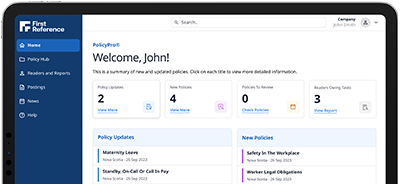
Enforcing the right to disconnect
Rudner Law, Employment / HR Law & Mediation

The always-online era has been good and bad for employees and employers. The portability of work means that an employee may work from anywhere, not tied to an office. An employer can also address emergencies more efficiently, by being able to contact their staff anytime.
The move to remote work during the pandemic increased this constant availability; unfortunately, it has not been resolved with the return to the office after the end of the pandemic. This increased availability has blurred the line between work and life and has meant that some employers treat employees as constantly available.
To address this, several employment statutes have been revised to address a “right to disconnect.”
Canadian statutes governing the right to disconnect
In 2021, the Government of Ontario passed the Working for Workers 2021 Act, which amended the Employment Standards Act, 2000 (the “ESA”), including the requirement that certain employers prepare a policy on disconnecting from work.
In 2024, the Government of Canada passed Bill C-69, which included an amendment to the Canada Labour Code (the “CLC”) to include a “Policy on Disconnecting – Work Related Communication.” The revisions to the CLC include a provision for regulations related to this requirement, which have not been enacted and which may change the nature of this section of the CLC.
A discussion of the new provision of the CLC is premature; we do not know what an employer’s obligations will be. This article will focus on the provisions of the ESA regarding a “right to disconnect,” and their enforcement.
The right to disconnect in the ESA
Part VII.0.1 of the ESA outlines an employer’s obligation regarding a “Written Policy on Disconnecting from Work.” This mandates that any employer that employs 25 or more employees as of January 1 of each year to prepare a written policy for all employees with respect to disconnecting from work, before March 1 of that year.
There is no substantive obligation in the ESA for the contents of this policy. The employer is not required to establish a time period or circumstances where an employee is permitted to disconnect from work. Instead, compliance with the ESA is met by having a policy, in writing, before March 1. This policy could mandate that every employee always be available to work, and would meet the employer’s ESA requirements. However, as outlined below, an employer that seeks to rely on a policy that provides for constant employee access could run into issues with the ESA in different ways.
Enforcing the right to disconnect in the ESA
There is no real enforcement mechanism for this policy or the right to disconnect. An employer that does not have a written policy in place when their workplace is inspected may be subject to a compliance order from the Ministry of Labour. This would require the employer to prepare the policy in line with the requirements in the ESA. An employer that still does not comply may be subject to a fine under the ESA.
An employer that implements a policy stating that an employee must always be available outside of work and relies on this to contact employees for assistance outside of regular work hours will still find themselves interacting with the ESA in several areas.
The first is compensation. An employee must be paid for work, including when assisting outside of the regular hours of work.
The ESA includes the “three-hour rule.” Where an employee who regularly works more than three hours a day is required to present themself for work on a day they have not worked (including answering the phone at home) but works less than three hours, the employer shall pay the employee wages for the greater of three hours or the time worked. Where the employee has already worked that day, the employee will be paid based on the time spent and the employee’s hourly rate of pay.
The second is the employee’s hours of work. An employer may not require an employee to work more than 8 hours in a day (unless the employer has established a workday in excess of 8 hours) or 48 hours in a week (unless the employee consents to work in excess of this amount, in writing).
An employee who has reached their daily or weekly limit of hours of work, is not obligated to take an employer’s call after this limit. The employer may not penalize the employee for this refusal. The employee is exercising their rights under the ESA. Penalizing them for this exercise of rights is reprisal, which is also prohibited by the ESA.
An employee’s work (including after hours) counts towards their total weekly hours of work. An employer that frequently contacts an employee outside of the workday may find the employee’s total hours for the week rapidly increasing, to the point that the employee is working overtime as defined in the ESA (more than 44 hours in a week). This can increase the employer’s labour costs.
Conclusion
The inclusion of a right to disconnect in the ESA was initially considered as a positive step forward for employees in Ontario. The reality is that this “right” was a procedural guarantee in the ESA, requiring an employer to prepare a policy, and nothing else. The enforcement of this “right” is limited to a compliance order, where an employer does not have the policy in place.
However, there are other areas of the ESA which effectively create a “right to disconnect” by compelling the employer to pay an employee for the additional time worked (meaning the employer may think twice about contacting an employee outside of work) and permitting an employee to refuse work where it is in excess of their daily or weekly hours of work. Unless the ESA is revised to include a substantive obligation for the policy on disconnecting from work, this is the extent of any enforcement of this “right.”
By Geoffrey Lowe, Rudner Law
Table of Contents
Compliance Made Easy®

